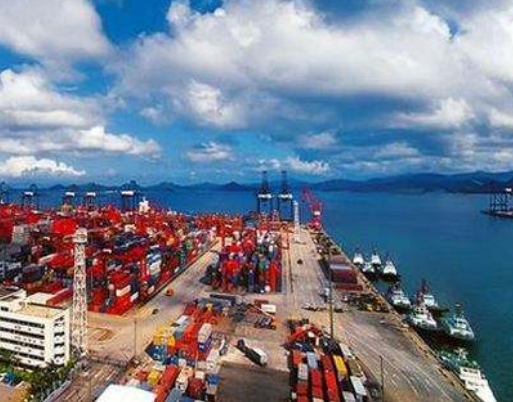Abstract: Shen Jianguang, chief economist with JD Finance, said in his article Raising China's imports requires targeted long-term effort that the first China International Import Expo, held last week in Shanghai, attracted wide attention as the world's first import-themed national-level fair. Since the beginning of this year, China have repeatedly stated that it would expand imports, introducing a series of policies aimed at lowering import tariffs. Such moves show that China is making proactive adjustments to shift from its traditional emphasis on exports to focus on both imports and exports. However, at present, there are some problems in China's import picture. China should make targeted long-term effort in a comprehensive manner to raise imports.
The following is the full text of the article:
The first China International Import Expo, held last week in Shanghai, attracted wide attention as the world's first import-themed national-level fair.
Since the beginning of this year, China's top leaders have repeatedly stated that they would expand imports, and they have introduced a series of policies aimed at lowering import tariffs. Such moves show that China is making proactive adjustments to shift from its traditional emphasis on exports to focus on both imports and exports.
The import expansion move is justified by domestic and external factors. Domestically, the financial crisis changed China's economic growth model, which now relies on both internal and external demand instead of simply external demand. In recent years, the role of net exports in lifting the Chinese economy has weakened greatly. During the first three quarters of this year, China's net exports made a negative contribution to GDP growth.
In the meantime, with per capita GDP exceeding 8,800 U. S. dollars, the public is demanding better-quality products and services. With increasing demand for advanced medicines, educational products and high-end daily necessities, expanding imports can help satisfy consumers.
From the perspective of the external environment, with the rise of anti-globalization sentiment in recent years, China has been under protectionist pressure over its large, longstanding trade surpluses. Moreover, after China's accession to the WTO, the country's exports expanded rapidly, but imports were relatively limited, leading to international doubts over China's market economy status and openness.
With these factors in mind, China has taken the initiative to expand imports, which will help meet increased domestic demand and ease external pressure and strengthen international cooperation.
At present, there are some problems in China's import picture.
First, China's import volume is relatively low, compared with its exports. According to statistics from the World Bank, as of the end of 2016, China's combined imports of services and goods accounted for 17.4 percent of GDP, while the proportion of exports in GDP was nearly 20 percent.
Second, imports of consumer goods are too low to meet Chinese consumption demand. In terms of quantity, China mainly imports capital goods and intermediate goods like resources and equipment, with a low import volume of consumer goods. The proportion of consumer goods in imports in the US and Japan has exceeded 20 percent for a long time, while the figure in China was only 5.7 percent in 2017.
Moreover, the structure of China's household expenditures has seen great changes in recent years. In 2017, China's Engel's coefficient - the proportion of household spending that goes to food, which is an indicator of national living standards - stood at less than 30 percent. There was brisk demand for high-end imported consumer goods such as healthcare products and cosmetics, which showed that China's quality of life had improved.
But China's imports of consumer goods mainly consisted of food, clothing and automobiles in 2017, with healthcare products and cosmetics accounting for only 13 percent and 4 percent of total imports, respectively, indicating a mismatch between supply and demand.
Third, the diversity of China's services imports must be improved. In 2017, goods and services accounted for 78 percent and 22 percent of imports, respectively. Imported services mainly include traditional items like tourism and transportation, while financial services and high-end technical services like patents and intellectual property rights account for a relatively low proportion.
Cutting tariffs is an important part of expanding imports. Since May this year, the Chinese government has reduced import tariff rates on food, home appliances, clothing, medicine, automobiles and other categories. But the country's overall import level hasn't changed much. The limited impact of the new policies may have something to do with economic conditions in China. The Chinese economy has been under downward pressure this year, with sluggish demand and low levels of consumption growth. Furthermore, import tariffs are only part of the additional cost of imported products. Such products are also charged value-added taxes and even consumption taxes.
It is a long-term process to expand imports, and policymakers need to do this in a comprehensive manner. Here are some suggestions.
First, guide the structural adjustment of imports by focusing on the introduction of high-quality consumer goods and high-end services. Second, promote further tax cuts, which should cover not only tariffs but also value-added tax and consumption tax. Import fees and taxes should be adjusted in a targeted manner. Third, seek to expand the scope of international cooperation. China should promote bilateral relations and economic exchanges, which will be conducive to alleviating external doubts and fending off the trade friction risk. Fourth, optimize the business climate to attract foreign investment and enhance the openness of the services sector, such as education and medical care.




 A single purchase
A single purchase







